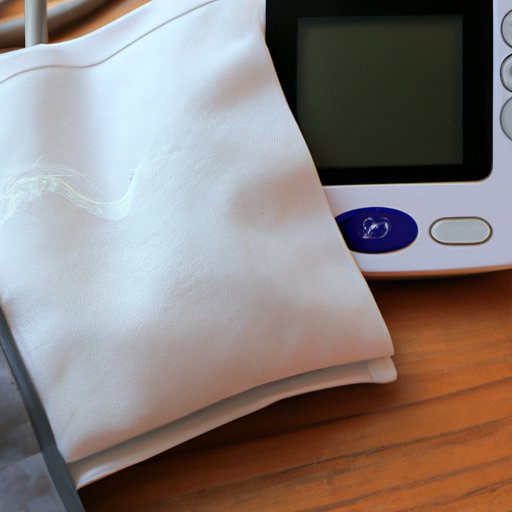
How to Raise Diastolic Blood Pressure Instantly: Tips and Strategies
High blood pressure is something that most of us are warned against, but low blood pressure can be equally concerning and uncomfortable. Diastolic blood pressure, the bottom number when taking a blood pressure reading, is an important indicator of overall health, especially for older adults. Those with consistently low diastolic blood pressure can experience symptoms such as fatigue, lightheadedness, fainting, and even organ damage. If you’re dealing with low diastolic blood pressure, you may be wondering if there are any quick-fix solutions. In this article, we will explore several strategies that can help boost diastolic blood pressure instantly, as well as tips and cautionary caveats to keep in mind along the way.
Understanding Diastolic Blood Pressure
Diastolic blood pressure, or the bottom number on a blood pressure reading, represents the pressure in your arteries when your heart rests between beats. This number is considered just as important as your systolic blood pressure reading (the top number that reflects the pressure in your arteries when your heart beats). A healthy diastolic blood pressure is usually around 80 mm Hg, but it can vary depending on your age, health, and a variety of other factors. When your diastolic blood pressure falls below 60 mm Hg, it’s considered low, and may be cause for concern.
Causes of Low Diastolic Blood Pressure
There are a variety of underlying conditions that can cause low diastolic blood pressure, including dehydration, anemia, pregnancy, diabetes, heart problems, and medications. Certain lifestyle factors, like poor diet and lack of exercise, can also contribute to low blood pressure. It’s important to pinpoint the cause of low blood pressure, as addressing that underlying issue is often the most effective way to raise blood pressure.
Dietary and Hydration Tips
One of the easiest and most effective ways to raise diastolic blood pressure is to increase your salt and fluid intake. Consuming more sodium can help your body retain water, which ultimately increases your blood volume and raises your blood pressure. However, it’s important to note that consuming too much sodium can also be detrimental to your health, particularly for those with kidney problems. Aim to consume around 2,300 milligrams of sodium per day, and be sure to hydrate yourself with plenty of water and electrolyte-rich drinks.
Exercise and Physical Activity
Exercise and physical activity can be an effective way to raise blood pressure, particularly for those who have been sedentary. Certain types of exercise can be particularly beneficial for those dealing with low diastolic blood pressure, including breathing techniques, stretching, and light weight lifting. These targeted exercises can help increase circulation and improve overall cardiovascular health.
Over-the-Counter Medications and Supplements
There are several over-the-counter medications and supplements that can be helpful in raising diastolic blood pressure safely. These include medications like midodrine, fludrocortisone, and pseudoephedrine, as well as supplements like caffeine and licorice root. However, it’s important to speak with a healthcare professional before taking any new medications or supplements, as they come with risks and potential side effects.
Herbal Remedies and Alternative Therapies
If you’re looking for natural remedies, there are several herbal supplements and alternative therapies that can help boost diastolic blood pressure. Ginseng, ginger, and licorice root are all believed to have blood pressure-raising properties, and acupuncture can also be helpful for promoting circulation and reducing stress. However, it’s important to remember that natural remedies can still have potential risks and side effects, and it’s crucial to speak with a healthcare professional before incorporating any new treatments into your routine.
Compression and Support Garments
For those who may be dealing with low blood pressure due to circulation problems, compression and support garments can be a great option. Compression stockings can help improve blood flow by putting pressure on your legs and feet, and abdominal binders can help support your core muscles and improve circulation. However, it’s important to use these garments safely and effectively, and to speak with a healthcare professional to determine if this is the right strategy for you.
Risks of Raising Blood Pressure Too Quickly
While it can be tempting to try to raise your diastolic blood pressure quickly, it’s important to exercise caution and not overdo it. Raising your blood pressure too quickly can lead to complications like dizziness, fainting, and even stroke or heart attack. It’s important to work with a healthcare professional to gradually raise your blood pressure in a safe and healthy way.
Conclusion
Dealing with low diastolic blood pressure can be challenging, but there are several strategies that can help improve your health and overall well-being. By focusing on underlying conditions, increasing sodium and fluid intake, incorporating exercise and physical activity, and exploring medication and alternative therapies, you can begin to raise your diastolic blood pressure in a safe and effective way. Remember to always consult a healthcare professional before making any changes to your routine, and take it slow and steady to avoid risks and potential complications.





